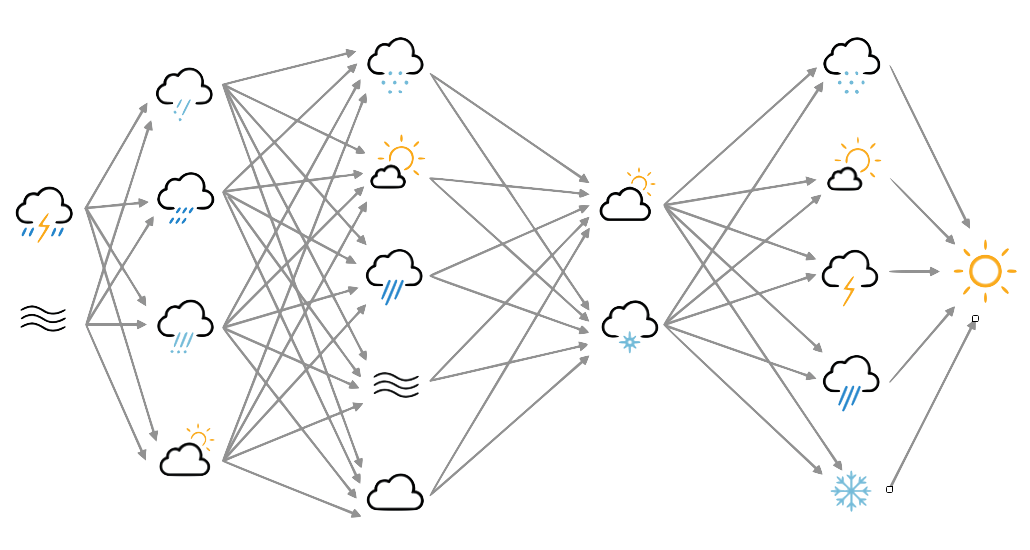Load data for the MO global analysis video¶
This file contains utility functions for loading data, from one point in time, from the Met Office global analysis. It contains three functions:
- load_recent_temperatures:
- Loads all the temperature fields from a period aroind the point specified (default +-5 days) and returns the mean over the period and the mean diurnal cycle component, at the given point in time, over the period (so if the given time is 7am it will return the mean difference betqween time at 7am and daily average).
- load_li_precip:
- Same as the load function from IRData except that it takes the logarithm of precipitation before interpolating in time. (When plotting log fields, you get a more consistent result from interpolating the logs than from taking the log of the interpolated value).
- load_di_icec(dte):
- Same as the load function from IRData except that it only loads data from file at 0Z, and otherwise interpolates. The opfc data output has 6-hourly sea-ice, but all the values within a day are the same.
# Data loading functions for the MO analysis video
import datetime
import IRData.opfc as opfc
import iris
import numpy
# We want to modify the present temperature by emphasising the difference
# with the climatological average, and reducing the diurnal variability.
# To enable this make an estimate of the climatological value (mean
# from 'before' to 'after'), and the current diurnal variability (mean
# at current time of day, minus daily mean, over the same period)
# Returns two iris cubes (climatology and diurnal cycle size).
def load_recent_temperatures(dte, # current time (datetime.datetime)
before=5, # use this many days before
after=5): # use this many days after
stt=dte-datetime.timedelta(days=before)
ent=dte+datetime.timedelta(days=after)
ct=stt
tcount=0
dcount=0
tavg=None
davg=None
while ct<ent:
try:
ttmp=opfc.load('air.2m',ct,model='global')
tcount += 1
if tavg is None:
tavg = ttmp.copy()
else:
tavg.data += ttmp.data
if ct.hour==dte.hour:
dcount += 1
if davg is None:
davg = ttmp.copy()
else:
davg.data += ttmp.data
except:
ct += datetime.timedelta(hours=1)
continue
ct += datetime.timedelta(hours=1)
tavg.data /= tcount
davg.data /= dcount
davg.data -= tavg.data
return (tavg,davg)
# We're plotting log precip - so interpolate in log space tooif dte.minute<30:
def load_li_precip(dte): # Time to plot (datetime.datetime)
if dte.minute<30:
prevt=dte-datetime.timedelta(minutes=30+dte.minute)
else:
prevt=dte-datetime.timedelta(minutes=dte.minute-30)
nextt=prevt+datetime.timedelta(hours=1)
prevp=opfc.load('prate_a',prevt,model='global')
prevp.data += 1.0e-7
prevp.data=numpy.log(prevp.data)
nextp=opfc.load('prate_a',nextt,model='global')
nextp.data += 1.0e-7
nextp.data=numpy.log(nextp.data)
w=(dte-prevt).total_seconds()/(nextt-prevt).total_seconds()
precip=prevp.copy()
precip.data=prevp.data*(1-w)+nextp.data*w
precip.data += 15
precip.data /= 11
precip.data[precip.data<0] = 0
precip.data[precip.data>1] = 1
return precip
# Sea-ice data is provided hourly, but only updated daily
# so do an explicit interpolation over the day.
def load_di_icec(dte):
dte1=datetime.datetime(dte.year,dte.month,dte.day,0)
dte2=dte1+datetime.timedelta(days=1)
try:
icec=opfc.load('icec',dte1,model='global')
tmp =opfc.load('icec',dte2,model='global')
tmp.attributes=icec.attributes
icec=iris.cube.CubeList((icec,tmp)).merge_cube()
icec=icec.interpolate([('time',dte)],iris.analysis.Linear())
except:
icec=opfc.load('icec',dte1-datetime.timedelta(days=1),model='global')
return icec
